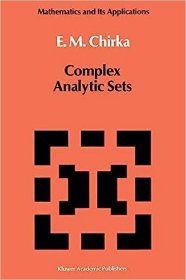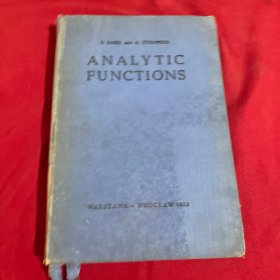
现货Analytic Hyperbolic Geometry and Albert Einstein's Special Theory of Relativity (Second Edition)[9789811244100]
¥ 1691 九五品
仅1件
作者Ungar, Abraham Albert
出版社World Scientific Publishing Company
ISBN9789811244100
出版时间2022-03
装帧精装
纸张其他
页数776页
正文语种英语
上书时间2024-06-05
- 最新上架
商品详情
- 品相描述:九五品
- 商品描述
- This book presents a powerful way to study Einstein's special theory of relativity and its underlying hyperbolic geometry in which analogies with classical results form the right tool. The premise of analogy as a study strategy is to make the unfamiliar familiar. Accordingly, this book introduces the notion of vectors into analytic hyperbolic geometry, where they are called gyrovectors. Gyrovectors turn out to be equivalence classes that add according to the gyroparallelogram law just as vectors are equivalence classes that add according to the parallelogram law. In the gyrolanguage of this book, accordingly, one prefixes a gyro to a classical term to mean the analogous term in hyperbolic geometry. As an example, the relativistic gyrotrigonometry of Einstein's special relativity is developed and employed to the study of the stellar aberration phenomenon in astronomy.Furthermore, the book presents, for the first time, the relativistic center of mass of an isolated system of noninteracting particles that coincided at some initial time t = 0. It turns out that the invariant mass of the relativistic center of mass of an expanding system (like galaxies) exceeds the sum of the masses of its constituent particles. This excess of mass suggests a viable mechanism for the formation of dark matter in the universe, which has not been detected but is needed to gravitationally "glue" each galaxy in the universe. The discovery of the relativistic center of mass in this book thus demonstrates once again the usefulness of the study of Einstein's special theory of relativity in terms of its underlying hyperbolic geometry.Key Features: oGyrotrigonometry — the hyperbolic trigonometry: Unlike the Euclidean triangle, the sides of the hyperbolic triangle are uniquely determined by its hyperbolic angles. Yet, remarkable novel analogies that gyrotrigonometry and trigonometry share emerge in the bookoGyrovectors — the hyperbolic vectors: For his chagrin, Vari?ak had to admit in 1924 that the adaption of vector algebra for use in hyperbolic space was just not possible. Modernizing the study of classical hyperbolic geometry, this book introduces hyperbolic vectors, called "gyrovectors". Furthermore, the book demonstrates that Einstein velocity addition is nothing else but a gyrovector addition in a gyrovector space, just as Newton velocity addition is a vector addition in a vector space. The advantage of the gyrovector approach is that analytic hyperbolic geometry segues into analytic Euclidean geometry, with notions such as group, vector, angle and line passing over to their hyperbolic gyrocounterparts (gyrogroup, gyrovector, gyroangle, gyroline, etc.)oEinstein velocity addition is not structureless: Seemingly structureless, Einstein velocity addition is unheard of in modern books on relativity physics (among outstanding exception is the book of Sexl and Urbantke). However, this book shows that Einstein velocity addition is a gyrovector addition in a gyrovector space just as Newton velocity addition is a vector addition in a vector spaceoSommerfeld's 1909 argument against Einstein velocity addition is no longer valid: In his Salzburg talk (Sept. 1909), Sommerfeld illustrated Einstein velocity addition as the "famous addition theorem" according to which velocity parallelograms do not close. Invalidating Sommerfeld's argument, the book introduces hyperbolic parallelograms, called gyroparallelograms, and demonstrates that in Einstein "famous addition theorem" velocity gyroparallelograms do close. Furthermore, the book extends the two-dimensional Einstein gyroparallelogram law to the higher dimensional gyroparallelepiped lawoThomas precession: Thomas precession is a relativistic effect that is either ignored or presented as an isolated phenomenon in books on modern physics. In this book Thomas precession is extended by abstraction into special automorphisms called (Thomas) gyrations. The book demonstrates that Thomas gyration lies in the foundations of both hyperbolic geometry and special relativity. In fact, it is Thomas gyration that gives rise to the prefix "gyro", which is extensively used in the book to emphasize analogies that modern and classical results share in this bookoThe Hyperbolic Pythagorean Theorem: In the literature, this Theorem shares no analogies with its Euclidean counterpart. Hence, several authors state that a true "Hyperbolic Pythagorean Theorem" does not exit. In contrast, this book presents a novel "Hyperbolic Pythagorean Theorem" that shares vivid visual and symbolic analogies with the Euclidean Pythagorean Theorem
相关推荐
-
![现货Dynamics and Analytic Number Theory[9781107552371]](https://www0.kfzimg.com/sw/kfz-cos/kfzimg/17733071/b2f9e67cc1bb2522_s.jpg)
现货Dynamics and Analytic Number Theory[9781107552371]
九五品上海
¥ 657.00
-
![现货Handbook of Analytic Operator Theory[9781138486416]](https://www0.kfzimg.com/sw/kfz-cos/kfzimg/17733071/8f82319b626bcf01_s.jpg)
现货Handbook of Analytic Operator Theory[9781138486416]
九五品上海
¥ 1697.00
-
![现货 Evolutionary Playwork: Reflective Analytic Practice [9780415550857]](https://www0.kfzimg.com/sw/kfz-cos/kfzimg/17733071/8cd40fef50becaa2_s.jpg)
现货 Evolutionary Playwork: Reflective Analytic Practice [9780415550857]
九五品上海
¥ 434.00
-
![现货Modernity Reimagined: An Analytic Guide[9781138825338]](https://www0.kfzimg.com/sw/kfz-cos/kfzimg/17733071/a3851e1d26430dfc_s.jpg)
现货Modernity Reimagined: An Analytic Guide[9781138825338]
九五品上海
¥ 1331.00
-

现货 复杂分析集Complex Analytic Sets
九五品上海
¥ 930.00
-

HYPER REALISTIC
八五品衡水
¥ 42.00
-

ANALYTIC GEOMETRY
八五品北京
¥ 60.00
-

ANALYTIC FUNCTIONS
六品北京
¥ 500.00
-

ANALYTIC GEOMETRY
八品廊坊
¥ 35.00
-

ANALYTIC GEOMETRY
九品北京
¥ 100.00
— 没有更多了 —
![现货Analytic Hyperbolic Geometry and Albert Einstein's Special Theory of Relativity (Second Edition)[9789811244100]](https://www0.kfzimg.com/sw/kfz-cos/kfzimg/17733071/53854be50849be1c_b.jpg)

![现货Materials and Technologies of Modern Production[9783036401683]](https://www0.kfzimg.com/sw/kfz-cos/kfzimg/17733071/5fd2824531e165d7_s.jpg)
![现货Introduction to Container Ship Operations and Onboard Safety[9781032155425]](https://www0.kfzimg.com/sw/kfz-cos/kfzimg/17733071/58b7ff43ef7909ee_s.jpg)
![现货Electrophosphorescent Materials and Devices[9789814877343]](https://www0.kfzimg.com/sw/kfz-cos/kfzimg/17733071/18cc1d77bcb7b488_s.jpg)
![现货Organic Semiconductors for Optoelectronics[9781119146100]](https://www0.kfzimg.com/sw/kfz-cos/kfzimg/17733071/24c85a750c708964_s.jpg)
![现货Advances in Food Rheology and Its Applications[9780081004319]](https://www0.kfzimg.com/sw/kfz-cos/kfzimg/17733071/e0c11603c9119d4d_s.jpg)
![现货Advanced Materials and Sustainable Technologies[9783035727562]](https://www0.kfzimg.com/sw/kfz-cos/kfzimg/17733071/dced675333874c48_s.jpg)
![现货Advanced Materials and Manufacturing Engineering II[9783035712681]](https://www0.kfzimg.com/sw/kfz-cos/kfzimg/17733071/660ccfae75fa8d3e_s.jpg)
![现货Materials in Machinery and Construction[9783035718119]](https://www0.kfzimg.com/sw/kfz-cos/kfzimg/17733071/6f402060775e9daa_s.jpg)
![现货Cereal Grain Quality (Softcover Reprint of the Original 1st 1996)[9789401071772]](https://www0.kfzimg.com/sw/kfz-cos/kfzimg/17733071/f93ca1c96a97403a_s.jpg)
![现货Analytic Hyperbolic Geometry and Albert Einstein's Special Theory of Relativity (Second Edition)[9789811244100]](/dist/img/error.jpg)

以下为对购买帮助不大的评价